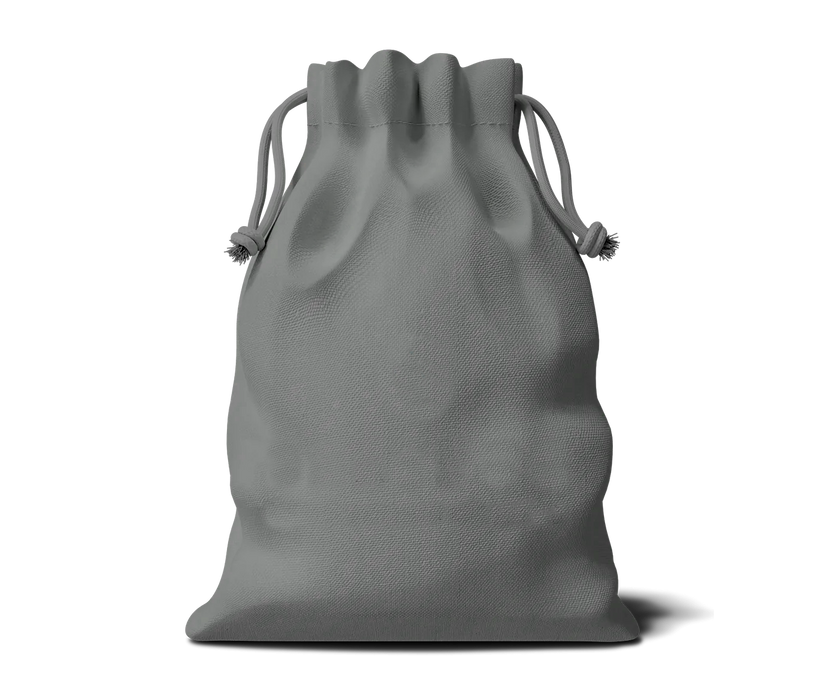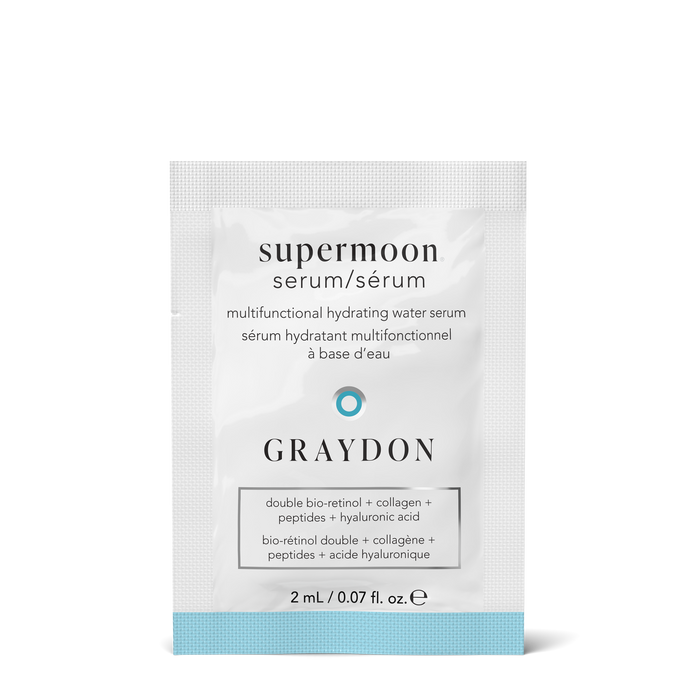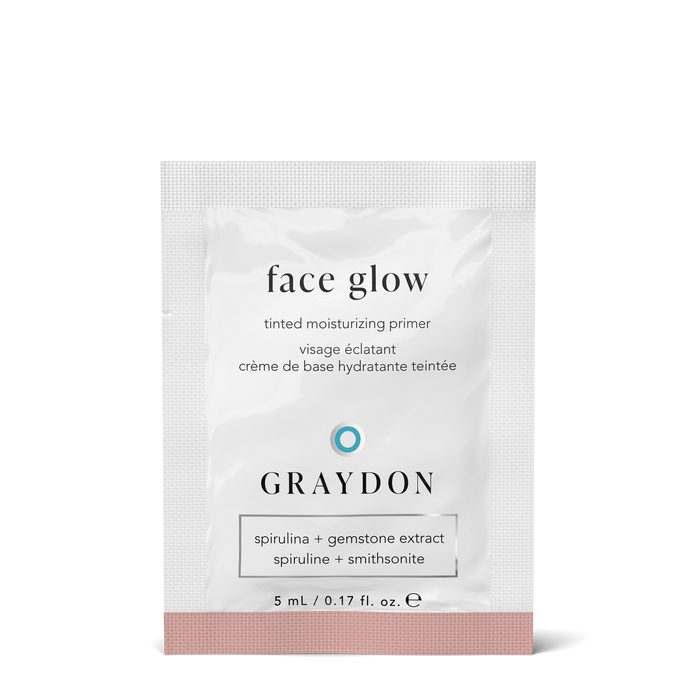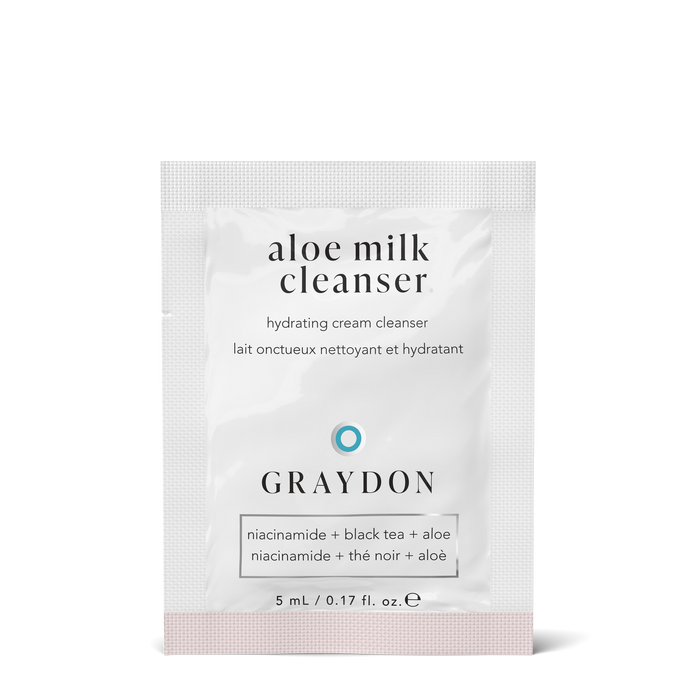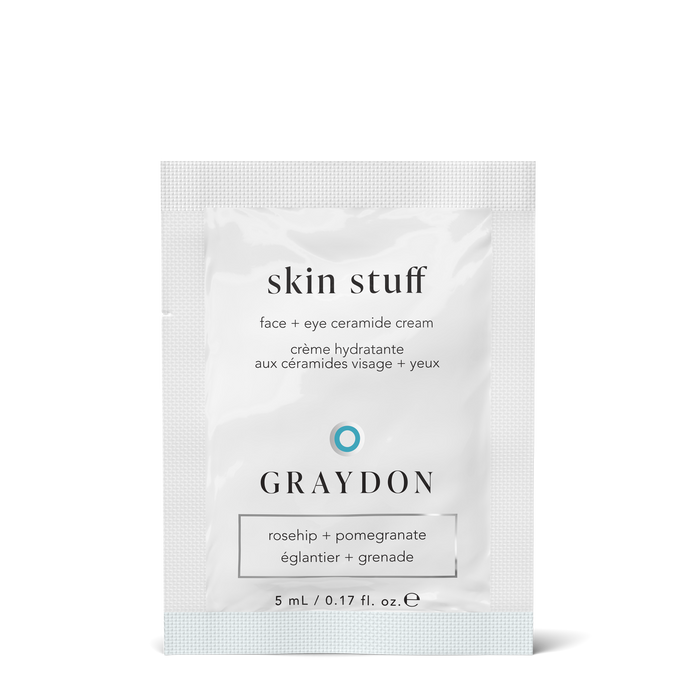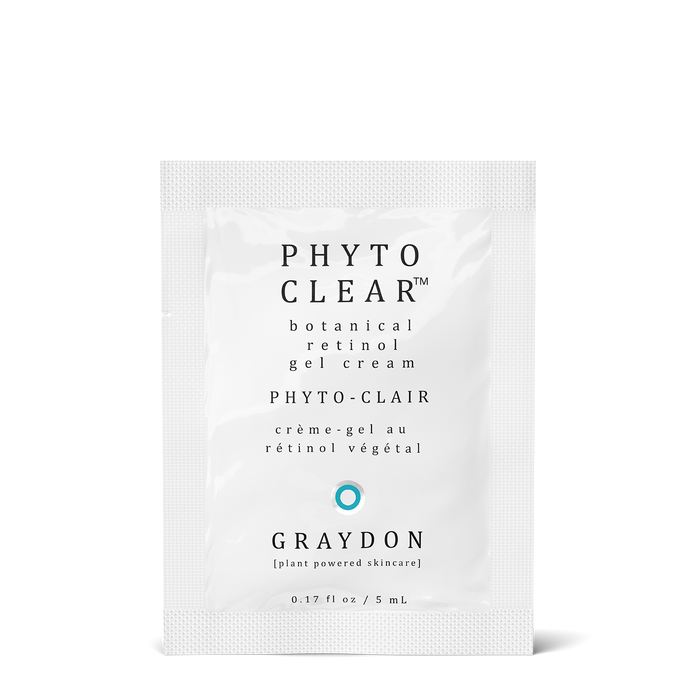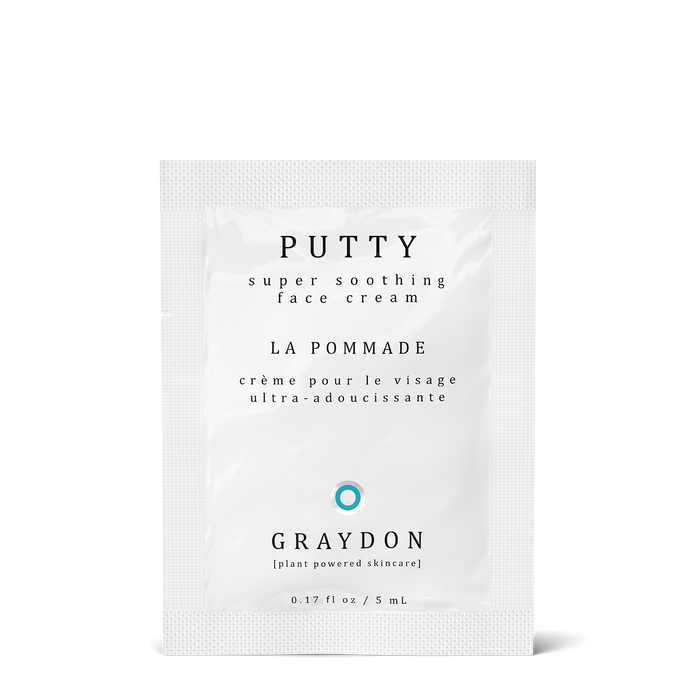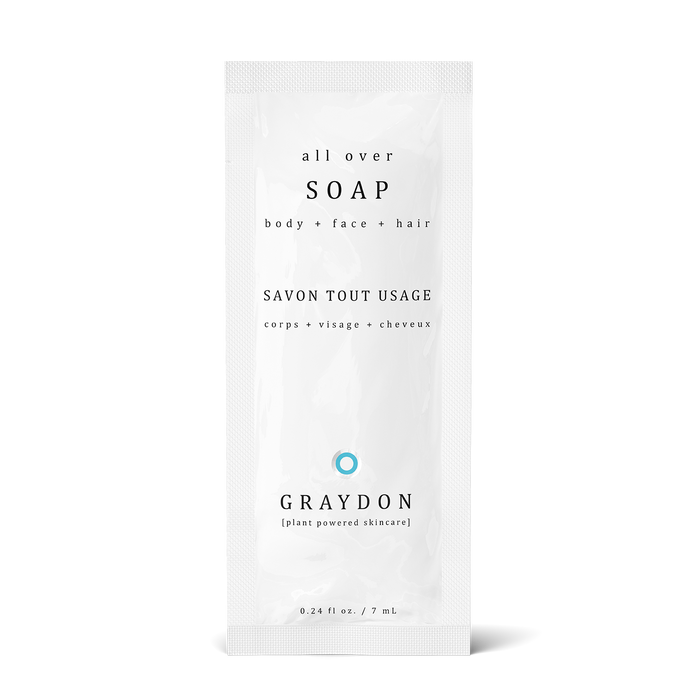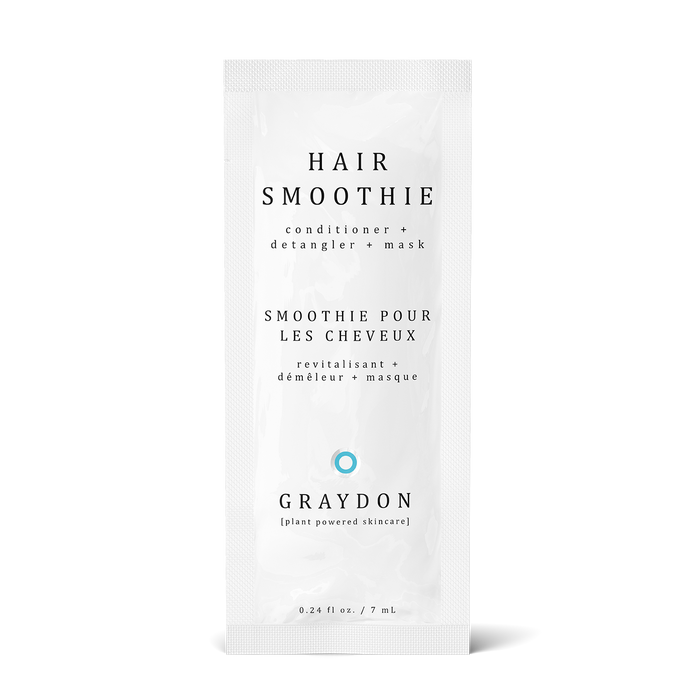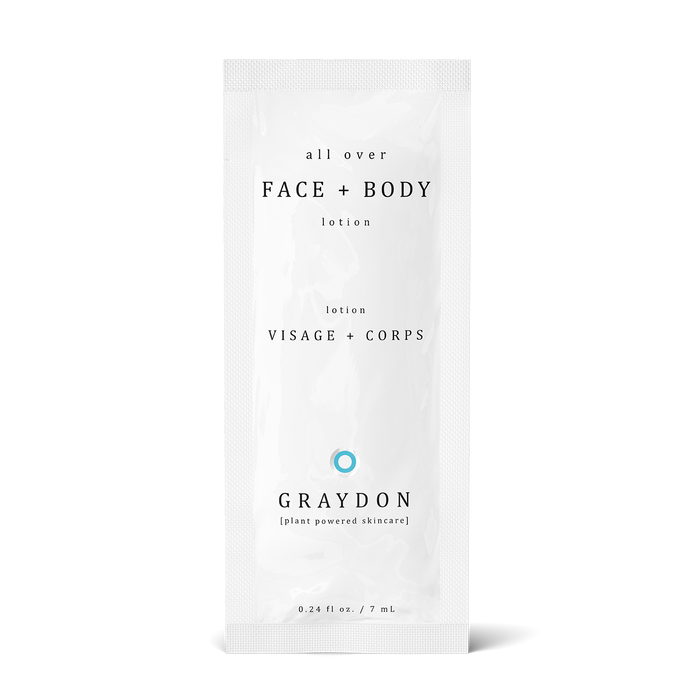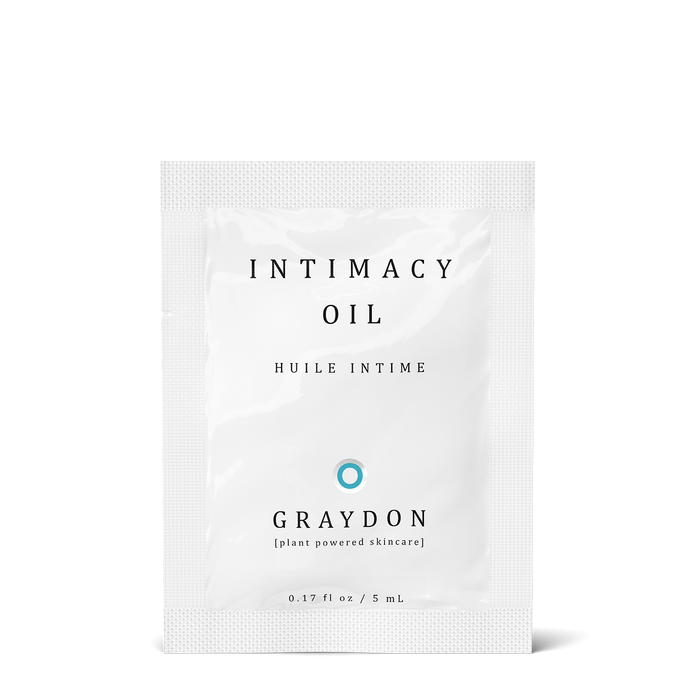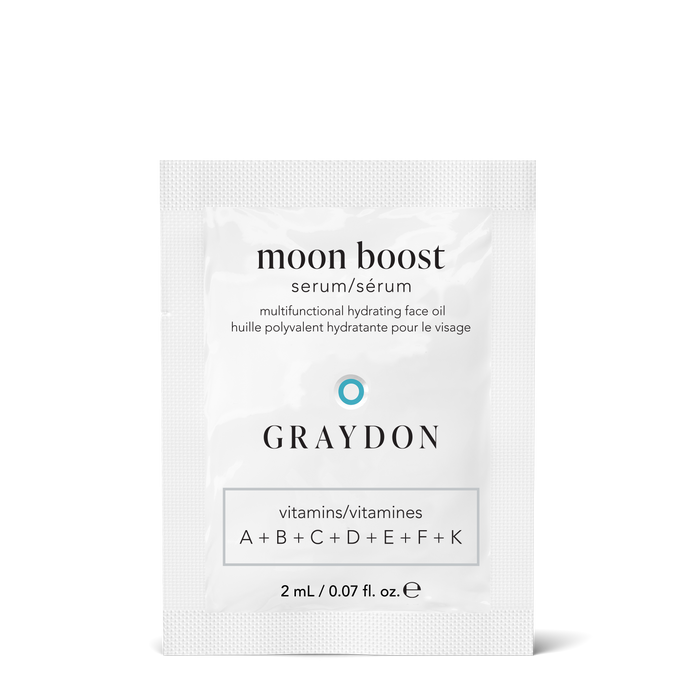IN THIS ARTICLE:
- About professional patch testing
- How to patch test facial products at home
- How to patch test body and hair products at home
- Patch test with Graydon Skincare
- Final words
Did you know that about 68% of people have had an allergic reaction to a new skincare product? That’s a pretty alarming number!
This statistic was taken straight from a recent survey we carried out on our Instagram Stories. We asked “Have you ever had an allergic reaction from a new product?” Out of 120 respondents, 81 people voted for “yes,” while the other 39 voted for “never.” What a lucky group!
If you’ve ever had an allergic reaction, then you know that it’s not a pleasant experience at all. From blistering and peeling to itchy irritation and bright-red rashes. The symptoms vary from person to person, but there's one thing they have in common. They hurt, physically and mentally.
If you’ve never experienced an allergic reaction to a skincare product, you might be thinking, “That probably happened because they used bad, improperly formulated products.”
Well, that might be true sometimes; however, it’s not always the case.
The truth is, whenever you start using a new skincare product, you can never be 100% sure exactly how your skin is going to react. Unfortunately, sometimes the skin becomes red, itchy and irritated after coming in contact with a product. This is called allergic contact dermatitis.
Now, the reason this happens is complex and it’s another topic on its own. However, there’s a simple exercise you can do to reduce the chances of getting an allergic reaction from a new product.
It’s called a patch test.
So what exactly is it? Why should we do it? And how do you conduct a patch test? Let’s discuss all of that in today’s article!
About professional patch testing
In the same Instagram Stories survey, we also asked our audience whether or not they patch test new products before using them. Out of 117 respondents, only 7 people voted for “always.” As for the rest, 46 people voted for “sometimes,” and 64 people voted for “never.”
I’m going to take the liberty and guess that the reason most people skip this very important process is because they’re not fully aware of what a patch test is.
In a professional setting, for example a dermatologist’s office, a patch test is a process that helps identify the specific ingredients that may lead to allergic contact dermatitis.
During a professional patch test, your skin is exposed to multiple suspected allergy-inducing ingredients (AKA: allergens). The ingredients or substances used for this process are pretty diverse. A common place to start is the European Standard Series of allergens, which is widely used in Europe and other parts of the world. The substances in this series are known to cause contact allergy, based on many years of studies. Some of the commonly known allergens in this series include nickel sulfate, potassium dichromate and cobalt chloride.
Other baseline series of allergens include the T.R.U.E.® Test allergens, the North American Standard Series and the International Standard Series.
When it comes to the method of testing, each patch testing centre may perform the test slightly differently. So if you’re having a patch test done professionally, be sure to ask your dermatologist about which method they use.
Generally, a patch test consists of multiple sessions. On the first appointment, a dermatologist applies patches with different substances to your back. Each patch is marked to help the dermatologist identify the test sites. These patches are secured with hypoallergenic tape and stay in place for 48 hours. During this time, there are several things you must stay away from, such as sun, showering or bathing, exercising and more.
On the next appointment, after the initial 48 hours, your dermatologist removes the patches and looks for any reaction. If needed, they may apply more patches to your skin for further assessment. In this case, you’ll have to come back for another session a few days later, usually after 96 hours. On your second and third appointments, your dermatologist will observe the reactions and record the results.
In the case of positive reactions, one or more tested areas on your back will be irritated and show symptoms like rash, itchiness, bumps, blisters and more. If this is the case, you’ll be able to isolate exactly which substances cause a reaction. Sometimes, the results aren’t exactly black and white, and the readings might be inconclusive. In which case, your dermatologist will carry out further testing.
So obviously, a patch test can help you identify the ingredients that you’re allergic to, and then you can avoid them. Simple! But more than that, having a professional patch test done can also help your dermatologist gain a better understanding of your skin needs. Then they can develop a treatment plan for you that includes medications or immunotherapy, on top of allergen avoidance.
Even though professional patch testing is generally safe for everybody, it’s not foolproof. In some circumstances, it might not even be recommended. For example, if you:
- Are known to have really reactive skin that led to severe allergic reactions in the past. In these cases, exposing yourself to even tiny amounts of these test substances can lead to anaphylaxis, which is life-threatening.
- Are on medications or other treatments that could alter the test results. If you’re taking antidepressants, heartburn medications or antihistamines, it might be better to continue taking these medications instead of stopping them for a patch test.
- Are already diagnosed with skin conditions like severe eczema or psoriasis. These issues may already affect the skin on your body that could be used for testing, meaning you won’t be able to patch test on those areas. Patch testing results can also be skewed due to conditions like dermatographism, in which people can easily develop raised, red lines on their skin.
If you fall into one of these categories, making you ineligible for patch testing, then don’t be too worried. Not all hope is lost. Your dermatologist can still conduct a blood test. There are many types of blood tests, such as the “total IgE test” or the “specific IgE test.”
How to patch test facial products at home
Okay, so obviously, the best way to conduct a patch test is to have it done by a dermatologist in a medical setting. This way, you’re able to pinpoint the exact ingredients that your skin doesn’t agree with and receive a treatment plan to deal with the problem.However, getting a professional patch test is not always feasible. So in that case, Ingrid, a Holistic Skin Coach, and Emma, our Social Marketing Coordinator + Product Educator (who also happens to be an awesome aesthetician) recommend that you perform a simplified version of the patch test at home.
This DIY method is not perfect, since you won’t be able to pinpoint the exact ingredients that cause allergic contact dermatitis. However, it should help you identify the products that your skin doesn’t agree with. Hey, it’s better than nothing, and for some of us, it’s probably all that we really need.
The basics
Performing a patch test at home is extremely simple. In fact, you can do it in three easy steps:
1. Apply a tiny amount (about the size of a grain of rice) of your new skincare product on your neck, either behind the ear or under the jawline. The skin on your neck is just as sensitive as the skin on your face so if a reaction occurs on your neck, then it’ll most likely happen to your face as well.
If you know that your skin tends to be sensitive and reactive, then you can also apply the product on the inside of your upper forearm.
2. Place an adhesive bandage over that area and wait for a minimum of 24 hours. Ideally, you should wait for 48 to 72 hours.
This is extremely important because negative reactions don’t always occur immediately. In some cases, it can take days for your skin to react. For some people, it may even take four days. So the longer you wait, the more accurate the results will be.
3. After an appropriate amount of time has passed, take off the adhesive bandage and observe your skin for any negative reactions.

Look for serious symptoms such as blisters, burning and any signs of contact dermatitis, such as redness, itching or flaking of the skin. If this occurs, take it as a sign that you and your new product just aren’t meant to be.
Now, some modifications need to be made, depending on the type of products you’re testing.
The modifications
Product placement: Emma has this valuable advice to offer: “If you are very prone to breaking out from products, I suggest a small patch test in the area in which you typically experience breakouts.” So basically, a patch test can not only help you to avoid allergic reactions, but it can also be a helpful step for those who are acne-prone.
Product type: If your new product is a strong acid peel or exfoliant, then definitely do not put it on your skin for over 24 hours. The results are definitely not going to be pretty. In this case, only patch test the product for about 30 seconds.
If your new product is a cleanser, apply the cleanser onto the inside of your upper forearm, after having rinsed that area with lukewarm water. Cleanse that area for about 1 minute and rinse it off. If you don’t see any negative reactions, repeat the process again after 24 hours, then again in 48 hours and 72 hours.
How to patch test body and hair products at home
While the skin on your face is generally more sensitive than the skin on your body, it’s still important to patch test body and hair products as well. Just imagine using a body lotion and discovering that your skin reacts to one (or more) of the ingredients AFTER slathering it all over your arms and legs. No thank you! Luckily, patch testing body and hair products at home isn’t much different than patch testing facial products.
Body products: To patch test products like body lotions and sunscreens, follow the basic steps outlined above; however, instead of applying the product to your neck, apply the product to your inner arm.
Hair products: To patch test products like shampoos and conditioners, Emma recommends using the products as directed on the packaging; however, instead of applying the product to your scalp, apply the product to your inner arm. If you don’t experience any negative reactions, repeat the process again after 24, 48 and 72 hours.
Patch test with Graydon Skincare
At Graydon Skincare, we pride ourselves on our plant-powered products, formulated with powerful, clinically-proven ingredients that can do wonderful things for your skin.
That being said, we understand that there’s no such thing as a miracle product that works for everybody. The sad reality is that your skin might be exposed to a substance that it just doesn’t agree with. This is why we highly recommend patch testing. The simple process allows you to vet a new skincare product before fully committing.
If you’re new to Graydon Skincare and are looking to explore our range of products, I highly recommend using our Deluxe Sample Set to conduct your patch testing.
This set helps you to test the water with our products before deciding whether to completely fall in love with us. It includes 11 of our product samples in one travel-friendly, reusable drawstring bag.
According to Emma, not purchasing full-sized products on the first try can also help you to prevent product waste. As a brand that also focuses on sustainability, we actively advocate against creating unnecessary waste. If you find yourself stuck with a full-sized product that you can’t use, I encourage you to share it with a friend or loved one. Remember, everyone’s skin is different and just because a product isn’t right for you, doesn’t mean it won’t be perfect for someone else.
Final words
Even with a patch test, there’s no guarantee that nothing bad will ever happen. As you mature and grow, your skin also changes. What was okay for you to use a year ago may no longer suit your skin today. According to Ingrid, it’s best to monitor how your skin is topically metabolizing the product on a regular basis and go from there.
And that’s it! I hope that by reading this, you’ll be more inclined to patch test your new products. And if you’re already doing it, then kudos to you!






